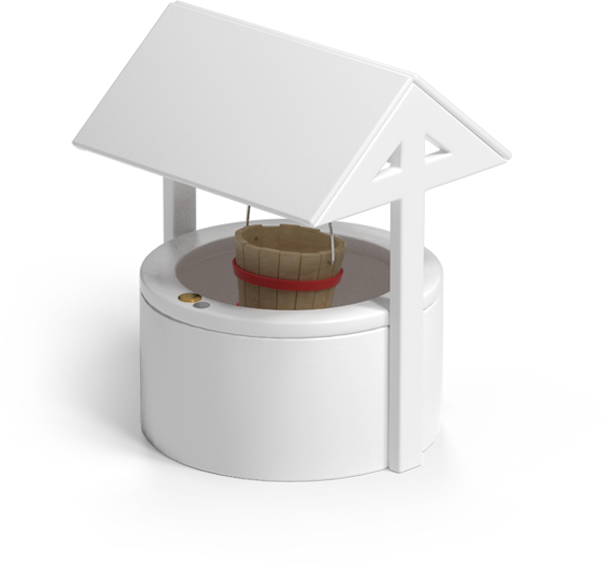How To Find A Good Investment Property
The immediate attraction of buy-to-let property investment may have faded in the last 12 months or so, but it still remains a popular field for budding property entrepreneurs. Despite a tax crackdown on landlords and restrictive stamp duty regulations, investing in residential property still appeals.
By Jon Howe9/1/22

The immediate attraction of buy-to-let property investment may have faded in the last 12 months or so, but it still remains a popular field for budding property entrepreneurs. Despite a tax crackdown on landlords and restrictive stamp duty regulations, investing in residential property still appeals. Maybe it is the low interest rates and cheap mortgages, or maybe it is the feeling that you have an element of control over adding value to a property yourself, where you don’t have the same influence over an investment fund or stocks and shares?
While the property market is always changing, it is still quite straightforward to predict, and the factors that influence it are certainly conspicuous. Indeed, the main factor that will make or break your success as a property investor is the property itself. There are key decisions you need to make and significant considerations you need to look out for, which can make the difference between you reaping plentiful rewards and possibly moving onto another property to invest in, or being stuck with a white elephant and a mountain of debt.
In essence, property investment is popular because you can make money out of it, but that requires an element of skill, knowledge and sound judgement on the property you invest in. So here is a thorough rundown of the key elements you need to look out for, when trying to find a good investment property.
Set your objectives
The first step in finding a good property investment, as is so often the case, is the most important one. You need to first establish exactly what you want to get out of an investment. It is possible, of course, that you are just waiting for capital gain whilst being an owner-occupier and have no desires for renting the property out. But most property investors are interested in the buy-to-let market.
In many respects, setting your objectives is also about establishing your exit strategy. It may seem odd to be thinking about how you will get out of property investment just as you are looking to get into it, but you need to know your short term and ultimate destination, in order to work out how to get there. You might be looking long term to retirement, or simply short term to your second property investment, but either way, you need a plan. So how long do you intend to invest in your first property? And what is your Plan A and Plan B if things don’t go how you intended them to? It is important that you establish this and build contingency plans, which could make the difference between you successfully rebounding from some misfortune or miscalculation or being completely buried by it.
You need to calculate what you can afford to invest and how much you can afford to borrow. This dictates what kind of property you can invest in and therefore, what your target tenant will be. If you are looking at a long term plan, it is possible to envisage a path to get there, but as a first time investor it is perhaps wiser to think solely about this first property and where it could lead you. So you need to calculate what rental yield % is realistic and if that is sufficient for you, and then also consider both forced and market appreciation.
Forced appreciation is the value you add to your property through renovations, while market appreciation is the value gained by the property market changing and your property becoming more desirable. For the first-time investor it is arguably better to base any plans on market appreciation, as this can be judged on historical evidence, which can be researched. The value you add yourself is a much harder cost-benefit analysis to carry out, as it is more subjective and based on more ‘unknown’ factors. In that sense, investing in a property solely on ‘potential’ is a dangerous game for a first-time investor and is maybe something you can opt for a little further down the line, when know-how and financial resources allow your attitude to risk to change.
What is your target tenant?
You should now have an idea of the kind of property you want to invest in and roughly where that property will be. That in turn will lead you naturally to what your target tenant is. It is important to pitch a property correctly and to the right market in order to get maximum tenant occupation, and that strategy begins at a very early stage. The buy-to-let market is roughly divided into three sections, each with different requirements, considerations and levels of demand.
Firstly, students will always need somewhere temporary to live. There is an annual refreshing of new demand and they also offer an opportunity for multi-tenant properties, and hence can be lucrative, particularly as they are not so demanding over high-quality furniture and fittings, and so your initial refurbishment costs may not be excessive. On the flipside, student debt is a considerable factor and hence students can be unreliable tenants in terms of payment, and there may also be periods out of term where you are struggling to fill the property. Nevertheless, properties for students tend to be in historically well-established areas, close to universities and colleges, and hence there is a stability to the market. So this type of investment is fairly solid and secure as there will always be demand, albeit capital gain on the property may not be huge as the area is unlikely to change in terms of desirability or demographic.
Young professionals are a little more demanding with the style and furnishings of their property. These can be concentrated around city centre living and stylish new-build developments, or in fashionable suburbs where nightlife and amenities are good. In some respects, a young professional may not have too many different requirements to a student, but will be more house proud and want a little more comfort, and they have a regular income so therefore should be a more reliable tenant. With respects to properties, the market for young professionals is therefore much larger and with more scope and is perhaps more concentrated on desirability rather than convenience. City centre locations should always hold their value as a minimum, while specific suburbs may be a little more volatile, but timed right, a suburban property investment in an up and coming area can be very lucrative.
Finally, young families are often forced to rent if they cannot afford to get on the property ladder, and in this case, the property they want needs to be more convenient for schools and quality of life. They will want a garden and the property itself needs to be divided and appointed as a typical family home, where they might bring more of their own belongings. There is unlikely to be opportunities for multi-tenant occupation in this market and families may also want to add their own personal touch to a property. So as a landlord you can offer something of a blank canvass and hence don’t need to worry too much about eye-catching décor and styling. But in terms of fittings such as kitchen and bathroom suites, these will be much more of a factor and hence you need to consider this in your investment and related costings, and specifically how you plan to ‘sell’ the property to a potential tenant.
Understand the market
The property market doesn’t always play by the rules, and while you need to keep a close eye on interest rates, mortgage deals and what comes out of the chancellor’s Budget, you also have to be vigilant with local news and how it can affect the location you are looking to invest in. As we know already, different target markets have different demands, but the common factor is that a location has to be desirable to that market. With students it is relatively easy, unless new college campuses or university buildings are opening up. Students want to be close to their university and to the action; that is bars, clubs, sports facilities, shops and banks, and they don’t really care in which part of the city that is, or what the long term prospects for the area are.
Student properties are often highly concentrated in a particular area, but property you intend to let to young professionals or young families is a little harder to identify. In this respect you need to look a little closer at the historic demographic and image of an area and whether it will maintain, improve or reduce your investment. So what are the job prospects? Are there exciting development plans going on? What are the schools like? Are they building new schools elsewhere? Are there any civil plans for new transport links that may make an area very desirable very quickly? Are these factors likely to come to fruition by the time you plan to sell? There may be a population shift to or away from this area and you need to know about it, otherwise you could be left with a dead duck of a property that nobody wants to rent, and you could be forced to offer a reduced rent or to cut your losses completely.
What is your attitude to risk?
A lot of factors you look at when deciding upon a property to invest in come back to your attitude to risk. This could be whether you wish to invest in the potential of an area or in more of a ‘sure thing’, or it could be whether you wish to buy a property cheaply and do it up to standard or buy a readymade property that is in a condition to immediately put on the market.
If you have wind of definite plans for a location that will bring concrete desirability to a property then of course this is less of a risk. But plans can change and developments get delayed or ditched on the slightest thing, and you need to assess whether you can accommodate this delay or whether you can afford to press ahead, perhaps on a wing and a prayer? Similarly, investing more money in refurbishments is not always cost-effective. You don’t really know what added value it will give you and you have to consider whether you can afford to go a few months, potentially, with no rental income whilst you refurbish the house, and whether the work you will have to do will definitely attract a demand of tenants.
Many people also reduce the element of risk by investing in an area they are familiar with, either because they have historical knowledge of it and what kind of property will do well, or so they can keep close physical contact with the property. Of course this has obvious benefits if you are managing the property yourself, but this isn’t always the wisest move financially and it is sometimes beneficial to diversify into other locations, particularly if you are already a homeowner in that area, and hence could be hit twice by a decline in the market. Although naturally that applies in reverse also.
There is also a lot to be said for investing in a steady market that has reliable demand but won’t bring too much capital gain. As a first-time investor, rental yield is perhaps the biggest factor and hence your aim should be to find an established location where the foundation of your property investment portfolio can be built on steady ground.
Don’t be fooled by low prices
As a first time investor it can be tempting to invest in a property that is going cheap. Many people see themselves as ‘developers’ and look to take a hands-on approach to increasing the value of the property. This is fine if you have the skills and the time of course, but it can quickly eat into your valuable resources and leave you in a mess. It is easy to get blinded by a ‘good deal’ when you are so keen to get into property investment, but quite often a property is cheap for a reason.
Investing a pot of money in a property purchase is one thing, but investing in refurbishing a property is quite another. One is a known cost that you can save and budget for, the other is a rough estimation and could lead to ongoing costs that hamper you and your ability to expand for several years. However, you are faced with making a decision, often very quickly, and based on little solid information.
For a first-time investor, the general rule is considered to be that cosmetic work on a property to make it suitable for tenancy is fine, but anything structural or on the core of the house (ie. knocking walls down, electrical re-wiring or central heating etc) should perhaps be avoided. Certainly, if you are targeting young professionals or families, it is better to look in the new-build market where properties should be ready to make available for tenancy straight away. Any discount purchases to be had are more likely to be in the student market, where older properties require renovation. Often, this might simply involve converting a room into an extra bedroom, which of course brings more income very quickly and is therefore easier to justify.
Decorating and minor improvements can help make you money by making a property desirable for tenancy straight away, but anything above or beyond that will eat into your profits, at a time when you haven’t got much money to play with. Furthermore, a cheap property could be a reflection on the area, or another factor that is being hidden from you, and therefore you could ultimately struggle to find a suitable tenant, regardless of how much you spend on doing the house up. In any scenario it is a case of doing the research and doing the maths; to weigh up risk and the expense against the expected income or value increase, and when you are likely to see it.
Considerations
Identifying the right investment is the key to being a successful property investor, and hopefully this is a useful resource in channelling your thoughts to the right areas in this respect. To conclude, there is a list of considerations you need to make in order to capitalise on the property choice you decide upon and to ensure your first step into property investment is a successful one:
- Property market – are mortgages still attractive and interest rates still low? Don’t assume that the state-of-play in the property market is the same now as it was when you first started looking for a property a few months ago.
- Do the maths – essentially your rent needs to cover your mortgage and provide you with some income, but you also need to bear in mind initial costs on refurbishing the house and fees relating to the sale, a deposit on the house and potential periods of no income from rent.
- Don’t be greedy – your success is often dictated by achieving a decent rental yield around 10%, but don’t forget that your property has to attract tenants, so pitch your rental costs realistically for the property and location, and don’t make tenants pay for your mistakes or misjudgements.
- Haggle – it is important to remember that you hold some trump cards, particularly in that, like a first-time buyer, you are not in a property chain. This can be very attractive to someone who wants to sell quickly, but in addition it is worth researching the seller and asking them some questions, because their circumstances may lead to them accepting a lower offer.
- What kind of landlord do you want to be? Do you want the hands-on hassle of dealing with maintenance, finding tenants and drafting contracts, or do you just want to sit back and pay a fee to a management company?
- Build a team – you will need to surround yourself with reliable and trustworthy people, including professional advice for legal and financial issues and trades people to carry out work on the house, such as electricians, plumbers, joiners etc.
Take a look at our other articles




